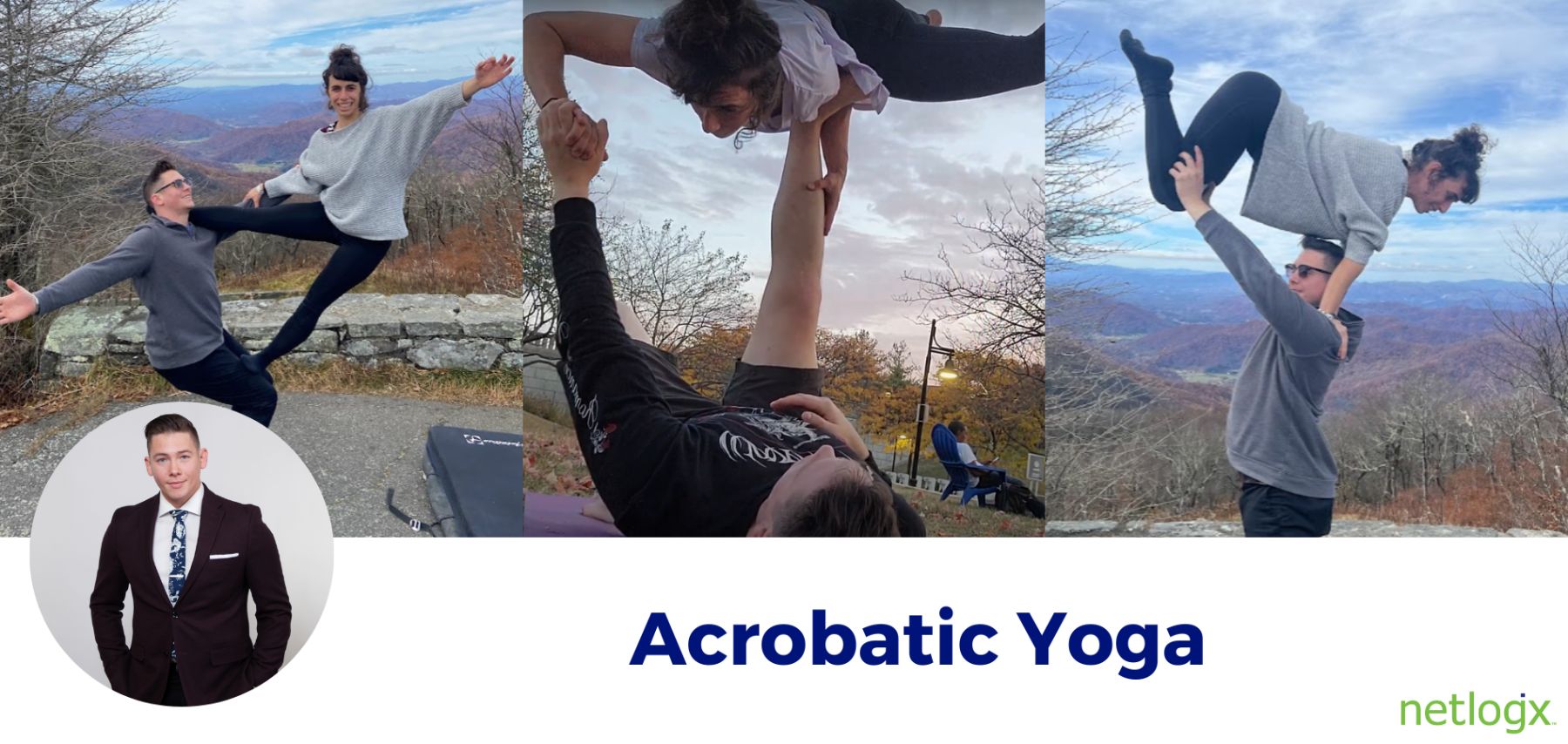When wellness comes to mind, there are so many different areas of focus. Mental wellness, physical wellness, spiritual wellness, societal wellness; the list goes on and on. When debating what to blog about, I was reminded of something new that I tried recently that checks a lot of these boxes. Sure, we all know about traditional yoga, but I was recently introduced to a different kind of yoga which is 50% yoga and 50% gymnastics. Acrobatic Yoga, or AcroYoga as it’s commonly referred to, is a partner-style yoga where two people (or more) combine their strength and flexibility to produce different poses. It originated in Canada around the early 2000s from Eugene Poku and Jessie Goldberg who both studied the yoga teachings of Krishnamacharya—an instructor who pioneered yoga as a strength-building exercise in the 1930s. Two decades since the term AcroYoga began to circulate, it constitutes an international movement and community where practitioners can find practicing groups all over the world.



The main elements of AcroYoga are the two participants, known as a “flyer” and a “base.” As the roles imply, one individual is on the ground lifting the other individual either on their back with their legs or standing using their core and legs as a platform for the flyer. The flyer will then pose either on the arms or legs of the base to finish the poses. Both roles require core strength to be able to move through the positions however, the flyer needs considerably more than the base. The trade-off is that a good base will usually possess good upper and lower body strength to provide a stable “platform” for the flyer. With the potential risk of falling or injury, a third participant is encouraged to act as a spotter to help break the fall of the flyer. The spotter offers the dual benefit of inspiring confidence within partners to try new things if they know they are safe.
While it may seem strange to talk about “risk of injury” and wellness in the same context, as I mentioned before there are several wellness benefits that are inherent in AcroYoga. The first is that AcroYoga is a community activity. At the very least it requires two people, so communication and trust are essential to the process. Flyers and bases need to be able to communicate both verbally and non-verbally so they can transition between poses while remaining synchronized with each other’s movements. Being able to do this with multiple people (not just the person you regularly practice with) only enhances the participants’ ability to communicate. The second wellness benefit of this sport is that it requires strength and flexibility. Ideally, participants should be fit not just muscularly but also in their joints to progress through their AcroYoga journey. Even if you are new to yoga, you will notice your strength and flexibility increase if you practice regularly.
Many cities across the world have vibrant AcroYoga communities—Indianapolis included. Inclusivity and support are encouraged in this practice, so if you are curious to try something new, you will be welcomed, included, and challenged to push yourself in a safe environment, should you decide to give AcroYoga a try. The photos featured in this blog are a few examples of poses that can be easily achieved with a little practice.

